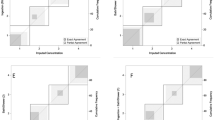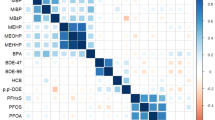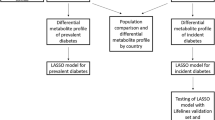Abstract
Background
Some disinfection byproducts (DBPs) are teratogens based on toxicological evidence. Conventional use of predominant DBPs as proxies for complex mixtures may result in decreased ability to detect associations in epidemiological studies.
Objective
We assessed risks of obstructive genitourinary birth defects (OGDs) in relation to 12 DBP mixtures and 13 individual component DBPs.
Methods
We designed a nested registry-based case-control study (210 OGD cases; 2100 controls) in Massachusetts towns with complete quarterly 1999–2004 data on four trihalomethanes (THMs) and five haloacetic acids (HAAs). We estimated temporally-weighted average DBP exposures for the first trimester of pregnancy. We estimated adjusted odds ratios (aORs) and 95% confidence intervals (CIs) for OGD in relation to individual DBPs, unweighted mixtures, and weighted mixtures based on THM/HAA relative potency factors (RPF) from animal toxicology data for full-litter resorption, eye defects, and neural tube defects.
Results
We detected elevated aORs for OGDs for the highest of bromodichloromethane (aOR = 1.75; 95% CI: 1.15–2.65), dibromochloromethane (aOR = 1.71; 95% CI: 1.15–2.54), bromodichloroacetic acid (aOR = 1.56; 95%CI: 0.97–2.51), chlorodibromoacetic acid (aOR = 1.97, 95% CI: 1.23–3.15), and tribromoacetic acid (aOR = 1.90; 95%CI: 1.20–3.03). Across unweighted mixture sums, the highest aORs were for the sum of three brominated THMs (aOR = 1.74; 95% CI: 1.15–2.64), the sum of six brominated HAAs (aOR = 1.43; 95% CI: 0.89–2.31), and the sum of nine brominated DBPs (aOR = 1.80; 95% CI: 1.05–3.10). Comparing eight RPF-weighted to unweighted mixtures, the largest aOR differences were for two HAA metrics, which both were higher with RPF weighting; other metrics had reduced or minimally changed ORs in RPF-weighted models.
Similar content being viewed by others
Data availability
Data used in this analysis are based on birth records and birth defects registry data and are not publicly available.
References
Hunter ES 3rd, Rogers E, Blanton M, Richard A, Chernoff N. Bromochloro-haloacetic acids: effects on mouse embryos in vitro and QSAR considerations. Reprod Toxicol. 2006;21:260–6.
Hunter ES 3rd, Rogers EH, Schmid JE, Richard A. Comparative effects of haloacetic acids in whole embryo culture. Teratology. 1996;54:57–64.
Villanueva CM, Gracia-Lavedán E, Ibarluzea J, Santa Marina L, Ballester F, Llop S, et al. Exposure to trihalomethanes through different water uses and birth weight, small for gestational age, and preterm delivery in Spain. Environ Health Perspect. 2011;119:1824–30.
Summerhayes RJ, Rahman B, Morgan GG, Beresin G, Moreno C, Wright JM. Meta-analysis of small for gestational age births and disinfection byproduct exposures. Environ Res. 2021;196:110280.
Ileka-Priouzeau S, Campagna C, Legay C, Deonandan R, Rodriguez MJ, Levallois P. Women exposure during pregnancy to haloacetaldehydes and haloacetonitriles in drinking water and risk of small-for-gestational-age neonate. Environ Res. 2015;137:338–48.
Luo Q, Miao Y, Liu C, Bei E, Zhang JF, Zhang LH, et al. Maternal exposure to nitrosamines in drinking water during pregnancy and birth outcomes in a Chinese cohort. Chemosphere. 2023;315:137776.
Wright JM, Evans A, Kaufman JA, Rivera-Nunez Z, Narotsky MG. Disinfection By-Product Exposures and the Risk of Specific Cardiac Birth Defects. Environ Health Perspect. 2017;125:269–277.
Nieuwenhuijsen MJ, Martinez D, Grellier J, Bennett J, Best N, Iszatt N, et al. Chlorination disinfection by-products in drinking water and congenital anomalies: review and meta-analyses. Environ Health Perspect. 2009;117:1486–93.
Grazuleviciene R, Kapustinskiene V, Vencloviene J, Buinauskiene J, Nieuwenhuijsen MJ. Risk of congenital anomalies in relation to the uptake of trihalomethane from drinking water during pregnancy. Occup Environ Med. 2013;70:274–82.
Righi E, Bechtold P, Tortorici D, Lauriola P, Calzolari E, Astolfi G, et al. Trihalomethanes, chlorite, chlorate in drinking water and risk of congenital anomalies: a population-based case-control study in Northern Italy. Environ Res. 2012;116:66–73.
Chisholm K, Cook A, Bower C, Weinstein P. Risk of birth defects in Australian communities with high levels of brominated disinfection by-products. Environ Health Perspect. 2008;116:1267–73.
Säve-Söderbergh M, Toljander J, Donat-Vargas C, Åkesson A. Drinking Water Disinfection by-Products and Congenital Malformations: A Nationwide Register-Based Prospective Study. Environ Health Perspect. 2021;129:97012.
Aschengrau A, Zierler S, Cohen A. Quality of community drinking water and the occurrence of late adverse pregnancy outcomes. Arch Environ Health. 1993;48:105–13.
Magnus P, Jaakkola JJK, Skrondal A, Alexander J, Becker G, Krogh T, et al. Water Chlorination and Birth Defects. Epidemiology. 1999;10:513–7.
Hwang BF, Magnus P, Jaakkola JJ. Risk of specific birth defects in relation to chlorination and the amount of natural organic matter in the water supply. Am J Epidemiol. 2002;156:374–82.
Hwang BF, Jaakkola JJ, Guo HR. Water disinfection by-products and the risk of specific birth defects: a population-based cross-sectional study in Taiwan. Environ Health. 2008;7:23.
Nieuwenhuijsen MJ, Toledano MB, Bennett J, Best N, Hambly P, de Hoogh C, et al. Chlorination disinfection by-products and risk of congenital anomalies in England and Wales. Environ Health Perspect. 2008;116:216–22.
Tain YL, Luh H, Lin CY, Hsu CN. Incidence and risks of congenital anomalies of kidney and urinary tract in newborns: a population-based case-control study in Taiwan. Med (Baltim). 2016;95:e2659.
Murugapoopathy V, Gupta IR. A primer on congenital anomalies of the kidneys and urinary tracts (CAKUT). Clin J Am Soc Nephrol. 2020;15:723–31.
Pope JCT, Brock JW 3rd, Adams MC, Stephens FD, Ichikawa I. How they begin and how they end: classic and new theories for the development and deterioration of congenital anomalies of the kidney and urinary tract, CAKUT. J Am Soc Nephrol. 1999;10:2018–28.
Richardson SD, Kimura SY. Water Analysis: Emerging Contaminants and Current Issues. Anal Chem. 2020;92:473–505.
Regli S, Chen J, Messner M, Elovitz MS, Letkiewicz FJ, Pegram RA, et al. Estimating potential increased bladder cancer risk due to increased bromide concentrations in sources of disinfected drinking waters. Environ Sci Technol. 2015;49:13094–102.
Birnbaum LS, DeVito MJ. Use of toxic equivalency factors for risk assessment for dioxins and related compounds. Toxicology. 1995;105:391–401.
Massachusetts Birth Defects Monitoring Program. About the Birth Defects Monitoring Program. 2023. https://www.mass.gov/service-details/about-the-birth-defects-monitoring-program#:~:text=The%20MA%20Center%20for%20Birth,with%20birth%20defects%20in%20Massachusetts.
Caton AR. Exploring the seasonality of birth defects in the New York State Congenital Malformations Registry. Birth Defects Res A Clin Mol Teratol. 2012;94:424–37.
USEPA, Method 502.2. Volatile Organic Compounds in Water by Purge and Trap Capillary Column Gas Chromatography with Photoionization and Electrolytic Conductivity Detectors in Series. 1989, National Exposure Research Laboratory: Cincinnati, OH.
USEPA, Method 524.2. Measurement of Purgeable Organic Compounds in Water by Capillary Gas Column Chromatography / Mass Spectrometry. 1992, National Exposure Research Laboratory: Cincinnati, OH.
USEPA, Method 551.1. Determination of Chlorination Disinfection Byproducts, Chlorinated Solvents, and Halogenated Pesticides/Herbicides in Drinking Water by Liquid-Liquid Extraction and Gas Chromatography Electron-Capture Detection. 1995, National Exposure Research Laboratory: Cincinnati, OH.
USEPA, Method 552.1. Determination of Haloacetic Acids and Dalapon in Drinking Water by Ion-exchange Liquid-Solid Extraction and Gas Chromatography with an Electron Capture Detector. 1992, National Exposure Research Laboratory: Cincinnati, OH.
USEPA, Method 552.2. Determination of Haloacetic Acids and Dalapon in Drinking Water by Liquid-Liquid Extraction, Derivation and Gas Chromatography with Electron-capture Detection. 1995, National Exposure Research Laboratory: Cincinnati, OH.
Eaton AD, Greenberg AE, Standard Methods for the Examination of Water and Wastewater. 19 ed. 1995, Washington, DC: American Public Health Association.
Ma X. Prediction of the Formation, Speciation, and Health Risks of Unregulated Disinfection Byproducts in Drinking Water using a Kinetic Binomial Model, in Civil and Environmental Engineering. 2021, University of Massachusetts, Amherst.
Greenland S, Mansournia MA, Altman DG. Sparse data bias: a problem hiding in plain sight. Bmj. 2016;352:i1981.
Van den Berg M, Birnbaum L, Bosveld AT, Brunström B, Cook P, Feeley M, et al. Toxic equivalency factors (TEFs) for PCBs, PCDDs, PCDFs for humans and wildlife. Environ Health Perspect. 1998;106:775–92.
Narotsky MG, Best DS, McDonald A, Godin EA, Hunter ES 3rd, Simmons JE. Pregnancy loss and eye malformations in offspring of F344 rats following gestational exposure to mixtures of regulated trihalomethanes and haloacetic acids. Reprod Toxicol. 2011;31:59–65.
Narotsky MG. Developmental toxicity of disinfection byproducts in F344 rats: Effects on pregnancy maintenance and eye development. Submitted.
Smith MK, Randall JL, Stober JA, Read EJ. Developmental toxicity of dichloroacetonitrile: a by-product of drinking water disinfection. Fundam Appl Toxicol. 1989;12:765–72.
Smith MK, Randall JL, Read EJ, Stober JA. Developmental toxicity of dichloroacetate in the rat. Teratology. 1992;46:217–23.
Andrews JE, Nichols HP, Schmid JE, Mole LM, Hunter ES 3rd, Klinefelter GR. Developmental toxicity of mixtures: the water disinfection by-products dichloro-, dibromo- and bromochloro acetic acid in rat embryo culture. Reprod Toxicol. 2004;19:111–6.
USEPA, Benchmark Dose Software (BMDS) (Build 3.2; Model Library Version 2020) [Computer Software]. 2020; Available from: https://www.epa.gov/bmds/download-bmds.
Rasouly HM, Lu W. Lower urinary tract development and disease. Wiley Interdiscip Rev Syst Biol Med. 2013;5:307–42.
Wright JM, Schwartz J, Dockery DW. The effect of disinfection by-products and mutagenic activity on birth weight and gestational duration. Environ Health Perspect. 2004;112:920–5.
Cole SR, Platt RW, Schisterman EF, Chu H, Westreich D, Richardson D, et al. Illustrating bias due to conditioning on a collider. Int J Epidemiol. 2010;39:417–20.
Plewa MJ, Simmons JE, Richardson SD, Wagner ED. Mammalian cell cytotoxicity and genotoxicity of the haloacetic acids, a major class of drinking water disinfection by-products. Environ Mol Mutagen. 2010;51:871–8.
Kargalioglu Y, McMillan BJ, Minear RA, Plewa MJ. Analysis of the cytotoxicity and mutagenicity of drinking water disinfection by-products in Salmonella typhimurium. Teratog Carcinog Mutagen. 2002;22:113–28.
Kundu B, Richardson SD, Granville CA, Shaughnessy DT, Hanley NM, Swartz PD, et al. Comparative mutagenicity of halomethanes and halonitromethanes in Salmonella TA100: structure-activity analysis and mutation spectra. Mutat Res. 2004;554:335–50.
Liberatore HK, Daiber EJ, Ravuri SA, Schmid JE, Richardson SD, DeMarini DM. Disinfection byproducts in chlorinated or brominated swimming pools and spas: Role of brominated DBPs and association with mutagenicity. J Environ Sci. 2022;117:253–63.
Aschengrau A, Coogan PF, Quinn M, Cashins LJ. Occupational exposure to estrogenic chemicals and the occurrence of breast cancer: an exploratory analysis. Am J Ind Med. 1998;34:6–14.
Weisskopf Marc G, Seals Ryan M, Webster Thomas F. Bias amplification in epidemiologic analysis of exposure to mixtures. Environ Health Perspect. 2018;126:047003.
Symanski E, Savitz DA, Singer PC. Assessing spatial fluctuations, temporal variability, and measurement error in estimated levels of disinfection by-products in tap water: implications for exposure assessment. Occup Environ Med. 2004;61:65–72.
LeBel GL BF, Williams DT. A one-year survey of halogenated disinfection by-products in the distribution system of treatment plants using three different disinfection processes. Chemosphere. 1997;34:2301–17.
Klotz JB, Pyrch LA. Neural tube defects and drinking water disinfection by-products. Epidemiology. 1999;10:383–90.
Bell ML, Belanger K. Review of research on residential mobility during pregnancy: consequences for assessment of prenatal environmental exposures. J Expo Sci Environ Epidemiol. 2012;22:429–38.
Miller A, Siffel C, Correa A. Residential mobility during pregnancy: patterns and correlates. Matern Child Health J. 2010;14:625–34.
Moore CA, Khoury MJ, Liu Y. Does light-to-moderate alcohol consumption during pregnancy increase the risk for renal anomalies among offspring? Pediatrics. 1997;99:E11.
Kurita H, Motoki N, Inaba Y, Misawa Y, Ohira S, Kanai M, et al. Maternal alcohol consumption and risk of offspring with congenital malformation: the Japan Environment and Children’s Study. Pediatr Res. 2021;90:479–86.
Rivera-Nunez Z, Wright JM. Association of brominated trihalomethane and haloacetic acid exposure with fetal growth and preterm delivery in Massachusetts. J Occup Environ Med. 2013;55:1125–34.
Searles Nielsen S, Dills RL, Glass M, Mueller BA. Accuracy of prenatal smoking data from Washington State birth certificates in a population-based sample with cotinine measurements. Ann Epidemiol. 2014;24:236–9.
Heinke D, Rich-Edwards JW, Williams PL, Hernandez-Diaz S, Anderka M, Fisher SC, et al. Quantification of selection bias in studies of risk factors for birth defects among livebirths. Paediatr Perinat Epidemiol. 2020;34:655–64.
Massachusetts Birth Defects Monitoring Program, Massachusetts Birth Defects 2015-2018. 2023.
Disclaimer
The views expressed in this article are those of the authors and do not necessarily reflect the views or policies of the U.S. Environmental Protection Agency. This document has been reviewed in accordance with Agency policy and approved for publication.
Funding
JAK was supported in part by an appointment to the Research Participation Program at the Centers for Disease Control and Prevention administered by the Oak Ridge Institute for Science and Education through an interagency agreement between the U.S. Department of Energy and CDC. JAK was also supported in part by the National Institutes of Environmental Health Sciences (T32ES012870). AE was supported through the Oak Ridge Institute of Science and Education Research Participation Program (agreement no. DW8992376701) sponsored by the U.S. EPA. ZRN was supported through The National Academies, Research Associateship Programs sponsored by the U.S. EPA.
Author information
Authors and Affiliations
Contributions
JAK led the statistical analysis and led drafting and revision of the manuscript. JMW conceptualized the study, collected the data along with AM, and revised the manuscript. AE, ZRN, and AM prepared the analytic dataset and drafted analytic code in SAS. DAR contributed to development of the kinetic model used to predict four brominated haloacetic acids. MGN provided benchmark dose data for disinfection byproducts for use in relative potency factors, advised on the creation and use of relative potency factors, drafted text on methods for generation of relative potency factors, and revised the manuscript.
Corresponding author
Ethics declarations
Competing interests
The authors declare no competing interests.
Ethical approval
This research was based on confidential birth records data that did not contain personal identifiable information; therefore, institutional review board approval was not obtained nor was informed consent necessary because potential risk was considered to be minimal and no direct contact with study subjects occurred.
Additional information
Publisher’s note Springer Nature remains neutral with regard to jurisdictional claims in published maps and institutional affiliations.
Supplementary information
Rights and permissions
Springer Nature or its licensor (e.g. a society or other partner) holds exclusive rights to this article under a publishing agreement with the author(s) or other rightsholder(s); author self-archiving of the accepted manuscript version of this article is solely governed by the terms of such publishing agreement and applicable law.
About this article
Cite this article
Kaufman, J.A., Wright, J.M., Evans, A. et al. Risks of obstructive genitourinary birth defects in relation to trihalomethane and haloacetic acid exposures: expanding disinfection byproduct mixtures analyses using relative potency factors. J Expo Sci Environ Epidemiol 34, 34–46 (2024). https://doi.org/10.1038/s41370-023-00595-1
Received:
Revised:
Accepted:
Published:
Issue Date:
DOI: https://doi.org/10.1038/s41370-023-00595-1
- Springer Nature America, Inc.
Keywords
This article is cited by
-
Assessing exposure and health consequences of chemicals in drinking water in the 21st Century
Journal of Exposure Science & Environmental Epidemiology (2024)




